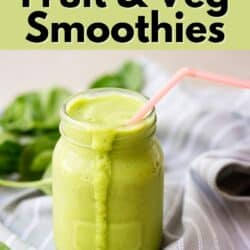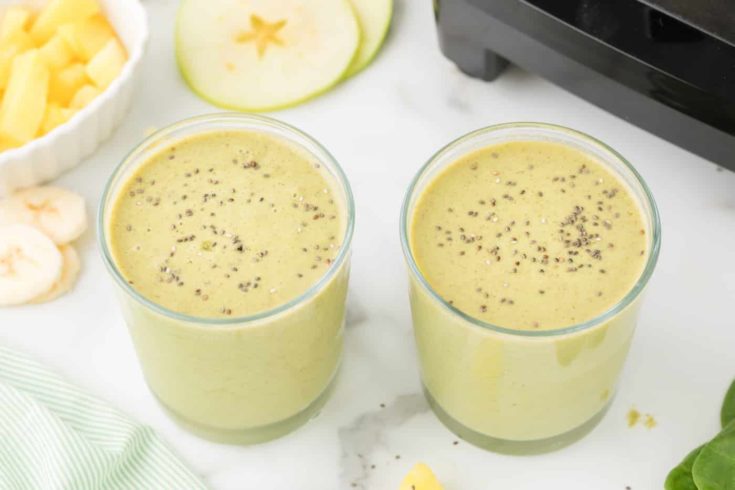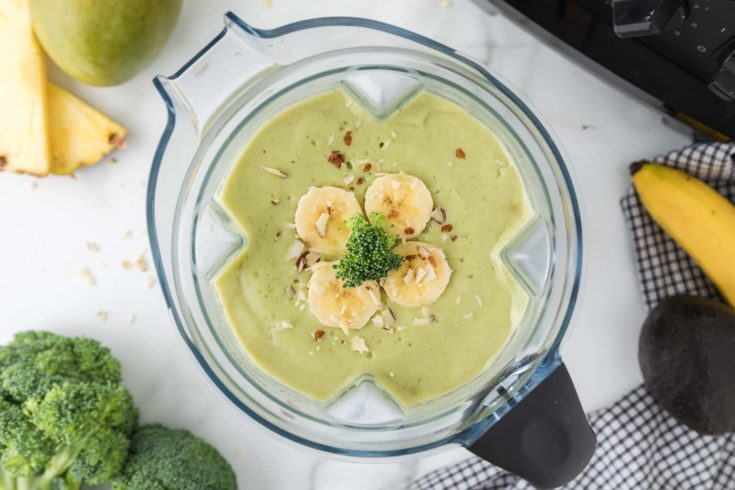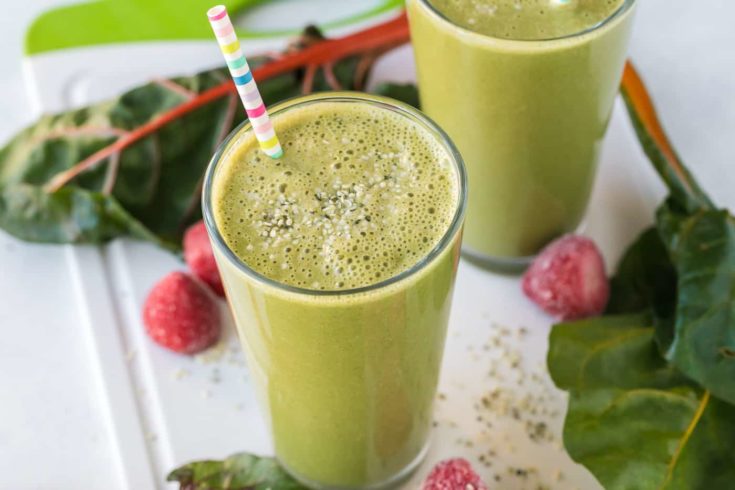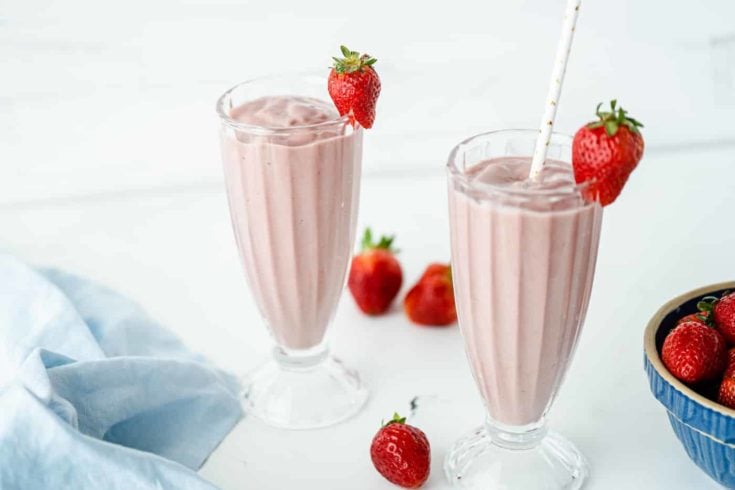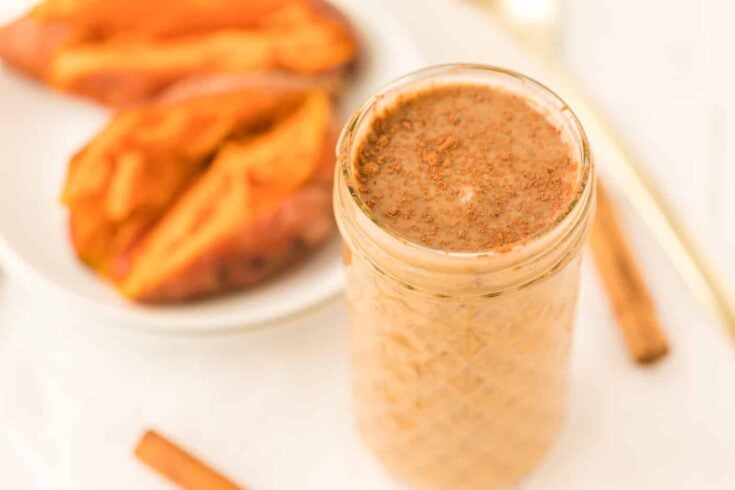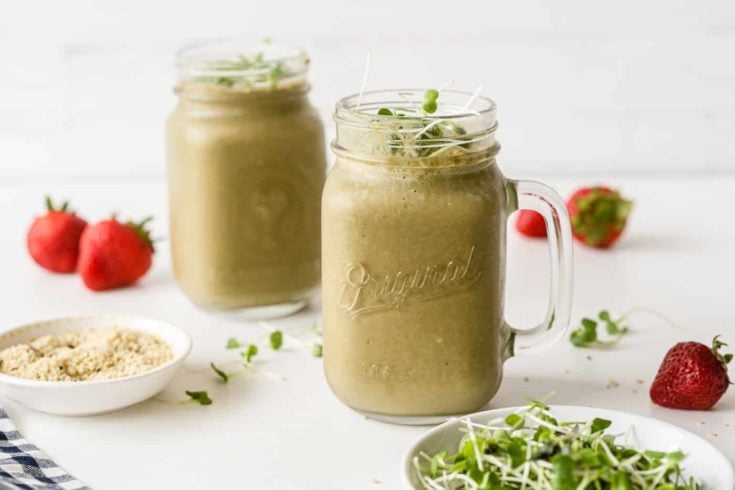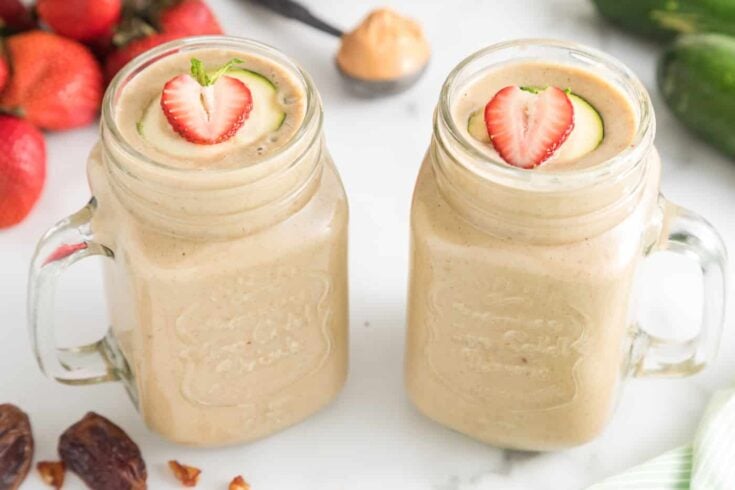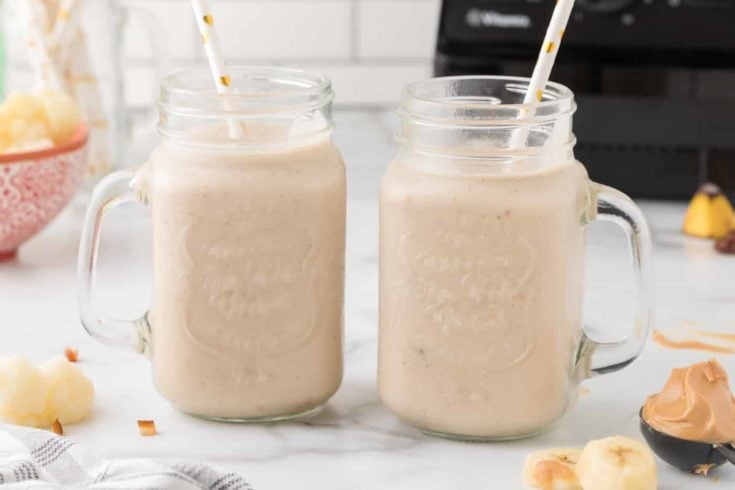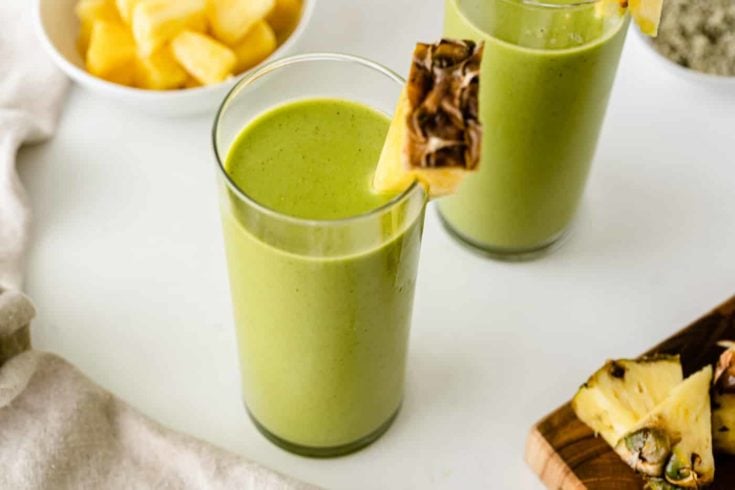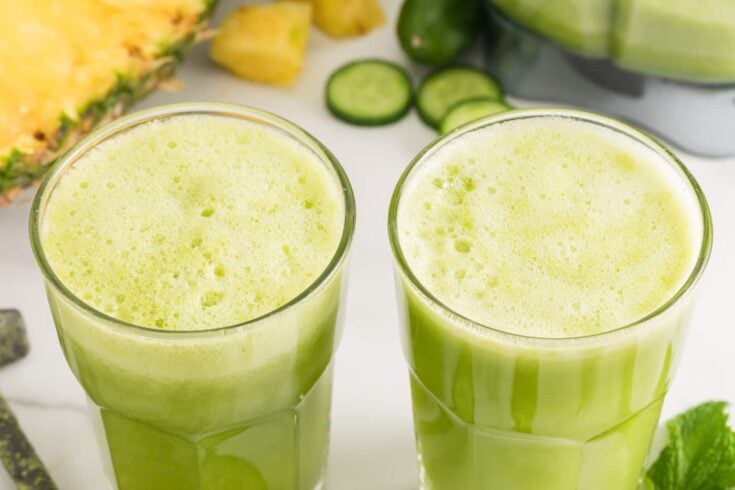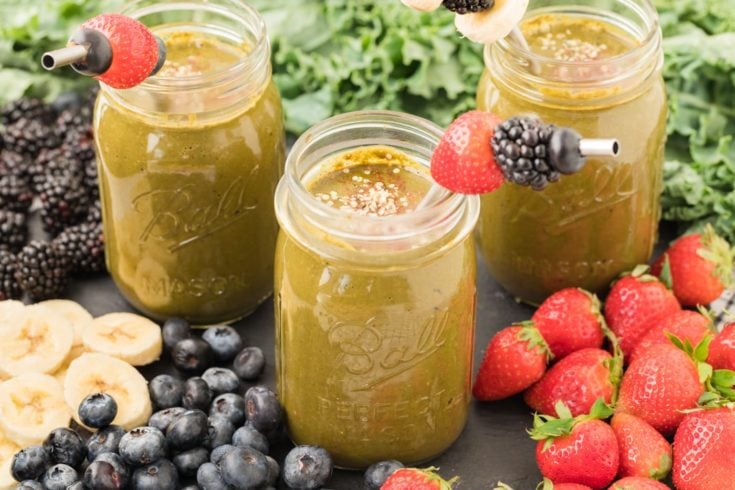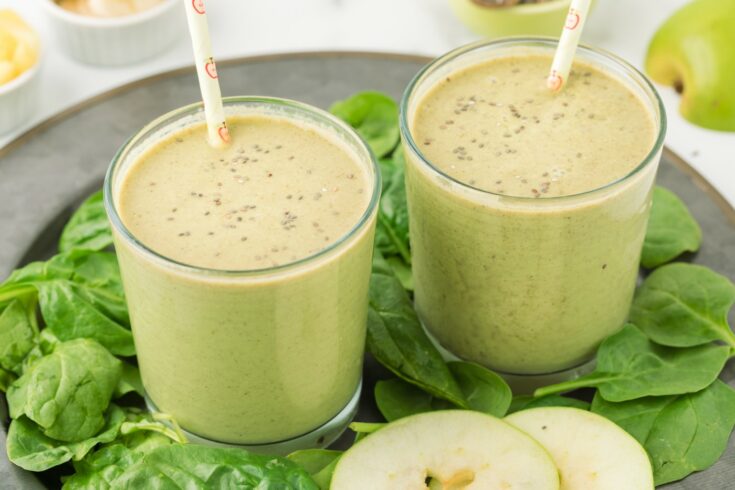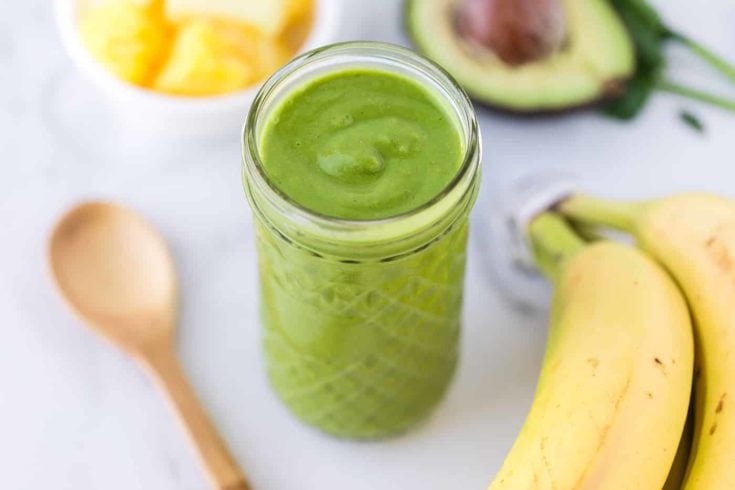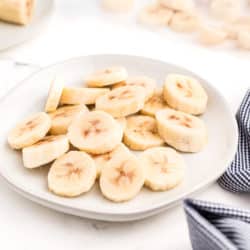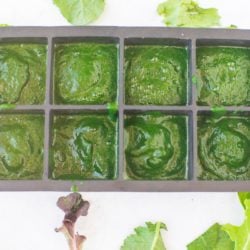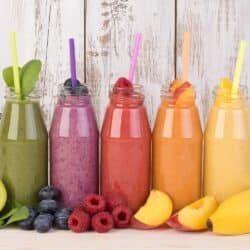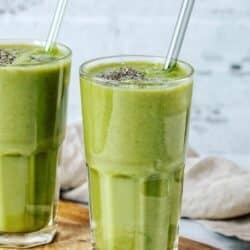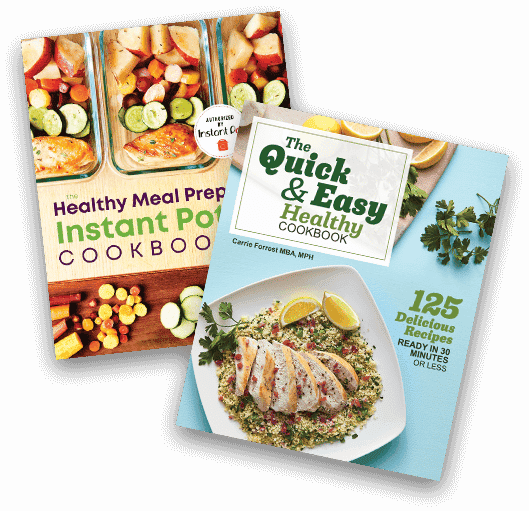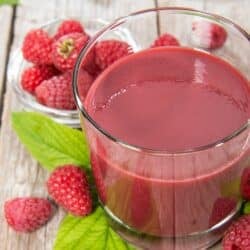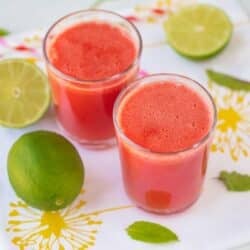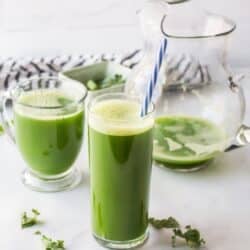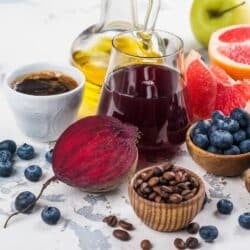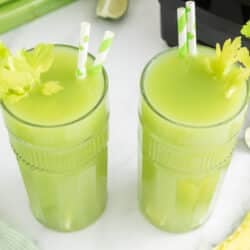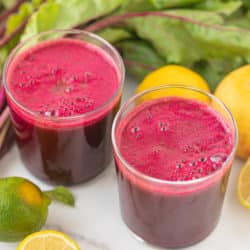15+ Fruit and Vegetable Smoothie Recipes
If you’re looking to add more veggies to your diet, you’ll want to check out this list of the 15 Fruit and Vegetable Smoothie! All of these recipes includes at least one serving of vegetables, but you’d never believe it. These recipes are all vegetarian with vegan and dairy-free options.
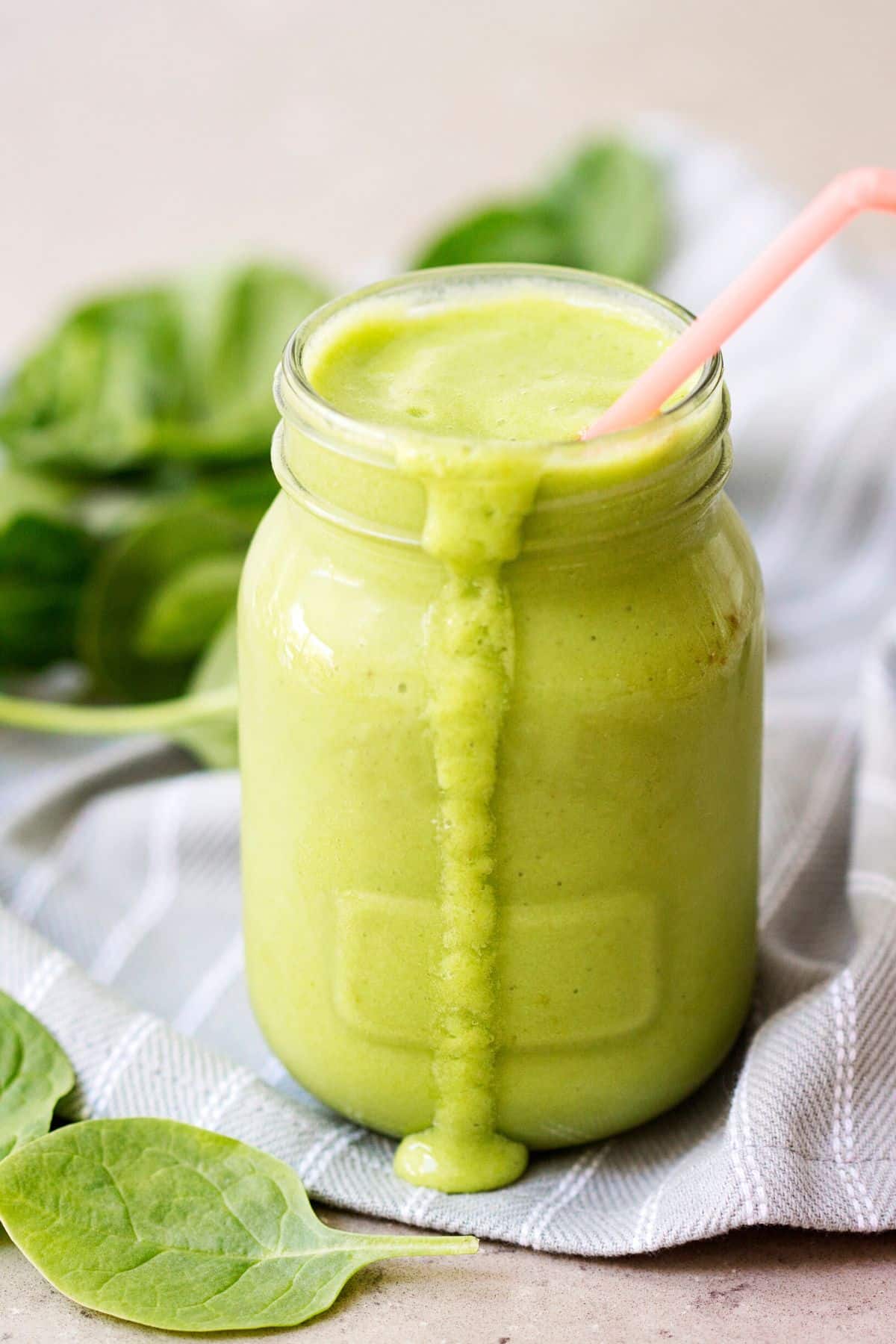
I’ve been making green smoothies for over a decade now. On almost every morning, you’ll find me making a green smoothie first thing. It’s the perfect way to get veggies and delicious fruit into an easy breakfast.
But vegetable smoothies can go beyond green smoothies with leafy greens like kale or spinach.
The veggie smoothie recipes I’m including below as my list of the best fruit and vegetables smoothies recipes include vegetables such as cauliflower, beets, sweet potatoes, broccoli sprouts, squash, and more!
A lot of my recipes also include lots of gut healing foods. I’ve also included my best tips for making them nutritious without being too “veggie” in flavor.
15 Best Fruit and Vegetable Smoothie Recipes
Green Apple Smoothie with Spinach
Spinach and green apples make the base of this yummy green smoothie. This is a great veggie smoothie to start with because it doesn't taste "green" at all!
Broccoli Smoothie with Pineapple
This broccoli smoothie actually tastes great! The pineapple covers any green flavor.
Swiss Chard Smoothie (Vegan)
Swiss chard is an excellent addition to green smoothies. Try this one today!
Strawberry Banana Beet Smoothie
Beets are a great ingredient for veggie smoothies because they are so pretty. You can't taste them in this yummy smoothie.
Sweet Potato Smoothie
Believe it or not, but this Sweet Potato Smoothie tastes like pie. It's amazing!
Broccoli Sprout Smoothie
Broccoli sprouts are incredibly healthy, and this smoothie is a great way to consume them.
Zucchini Strawberry Smoothie
If you have too much zucchini from your garden, try this Zucchini Smoothie!
Peanut Butter Cauliflower Smoothie
Oh yes, I've done it. I put cauliflower in a smoothie. Don't knock it until you've tried it. This one tastes like a peanut butter milkshake.
Food Processor Smoothie (Mango Pineapple Spinach)
You can make a green smoothie in a food processor, and I'll show you how.
Collard Greens Smoothie
Collard greens are excellent in smoothies. This dark leafy green blends right in.
Gut Health Smoothie Recipe With Yogurt
This green smoothie is nutritious and has gut-healing properties too!
Celery Cucumber Smoothie (Dairy-Free)
Celery and cucumber plus fruit come together in a creamy, delicious drink.
Ultimate Liver Detox Green Smoothie for Cleanse
This green smoothie includes ingredients to help support the liver's natural detoxification methods. It tastes great too!
Vegetable Smoothie Tips
There are some definite skills and tips to making veggie smoothies that actually taste good. I mean, if a smoothie makes you gag, then what’s the point? Ideally, you’ll create a fruit and vegetable smoothie that even kids will eat.
Here are my best vegetable smoothie tips along with the delicious recipes above.
1. Use a high-speed blender
I use a Vitamix Explorian which helps blend the toughest of veggies into a creamy, delicious smoothie.
You can use a regular blender, but your smoothie won’t be a creamy. If you’re going to be making a veggie smoothie recipe regularly, consider investing in a quality blender.
2. Limit the amount of vegetables per serving
Try to include only 1-2 servings of your favorite vegetables per smoothie.
You don’t want to overwhelm the flavor with the vegetable, as the whole point of blending vegetables and fruits together is to mask the flavor of the veggies. Even just one handful of fresh spinach can create a spinach smoothie which is a favorite recipe.
See more of my tips for the best vegetables for picky eaters to help you smoothie taste palatable and not overwhelm your taste buds with a green flavor.
3. Use ripe and sweet fruits to balance the vegetables
I almost always use frozen sweet fruits in my smoothies including frozen bananas, ripe banana, fresh oranges, sweet cherries, ripe pears, mango, or pineapple. These types of fruits can really mask almost any vegetable.
See my guide on how to freeze bananas for smoothies.
Plus, fruits are a rich source of antioxidants, vitamin A in the form of beta-carotene, vitamin C, and fiber. You can buy frozen fruits to save money.
4. Use a recipe
If you want a smoothie winner and not a smoothie disaster, it’s best to use a healthy smoothie recipe that has been tested. All of the fruit and vegetable smoothie recipes below fit that category. Click on your favorite for a full recipe, step-by-step directions, and nutritional info.
You’ll find that in my recipes below, I use wholesome ingredients like almond milk, orange juice, fresh ginger, baby spinach, coconut milk, almond butter, chia seeds, hemp seeds, and coconut water.
You can also include ingredients like peanut butter, Greek yogurt, lemon juice, protein powder, cocoa powder, and bee pollen to add even more nutrition.
You can also add a scoop or two of a clean protein powder to add up to 20-25 grams of protein per serving.
I try to avoid added sugar or sweeteners, but sometimes use maple syrup, molasses, or dates.
5. Try a smoothie bowl
If you aren’t a huge fan of liquid smoothies, switch it up and try a smoothie bowl instead! The recipes are essentially the same, but you’ll need to just cut the liquid in half.
You’ll end up with a much thicker smoothie that can be served in a bowl and eaten with a spoon.
See my list of the best toppings for smoothie bowls.
Additional Resources
Before we get to the recipes, here are some additional smoothie resources that might be helpful.
Don’t Miss These Smoothie Tips!
Conclusions
I hope you found some great new fruit and vegetable smoothie recipes to try! All of these healthy recipes have been well tested and are a delicious way to boost your immune system with dark leafy greens, fresh fruit, and other delicious ingredients.
Don’t forget to join my newsletter list to get exclusive clean eating recipes and tips. The newsletter is 100% free with no spam; unsubscribe anytime.
About the Author: Carrie Forrest has a master’s degree in public health with a specialty in nutrition and is a certified holistic nutritionist. She is a top wellness and food blogger with over 5 million annual visitors to her site. Carrie has an incredible story of recovery from chronic illness and is passionate about helping other women transform their health. Send her a message through her contact form.
Note: this post is for informational purposes only and is not intended as medical advice. Please consult your healthcare provider for recommendations related to your individual situation.


